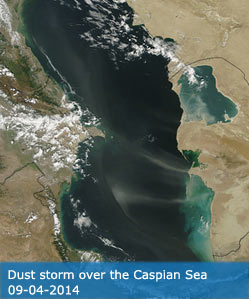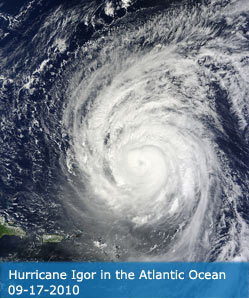Science Team
Publications
Davidi, A; Kostinski, AB; Koren, I; Lehahn, Y (2012). Observational bounds on atmospheric heating by aerosol absorption: Radiative signature of transatlantic dust. GEOPHYSICAL RESEARCH LETTERS, 39, L04803.
Abstract
Aerosols absorb solar radiation thus changing the atmospheric temperature profile but the overall magnitude of this effect is not known. To that end, Saharan dust emissions over the Atlantic Ocean provide an opportunity to examine aerosol-related heating via satellite imaging. A major difficulty, however, is disentangling a straightforward heating signal caused by the absorbing dust from a meteorological signal, which originates from correlation between dust concentration and air temperature. To tackle the problem, we combine temperature (T) soundings, from the atmospheric infrared sounder (AIRS), with aerosol optical depth (iota) measurements, from the moderate resolution imaging spectroradiometer (MODIS), and data assimilation results from the global data assimilation system (GDAS). We introduce the quantity beta(P) equivalent to partial derivative T-P/partial derivative tau, the subscript indicating temperature at a given pressure, and study the observed (AIRS) vs. modeled (GDAS) vertical profiles of beta(P). Using the vertical as well as horizontal patterns of beta(P) and Delta beta(P) equivalent to beta(obs). - beta(modl)., we avoid instrumental and geographic artifacts and extract a remarkably robust radiative heating signal of about 2-4 K within the dust layer. The extracted signal peaks over the mid-Atlantic Ocean, as a result of competing trends: "memory" of the dust source in the east, and mixing with transparent aerosol in the west. Citation: Davidi, A., A.B. Kostinski, I. Koren, and Y. Lehahn (2012), Observational bounds on atmospheric heating by aerosol absorption: Radiative signature of transatlantic dust, Geophys. Res. Lett., 39, L04803, doi:10.1029/2011GL050358.
DOI:
0094-8276
ISSN:
10.1029/2011GL050358




